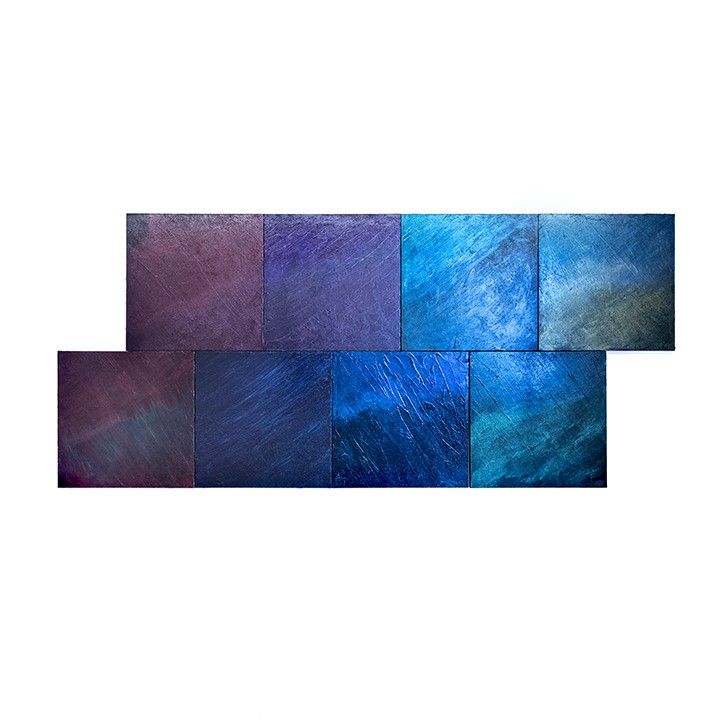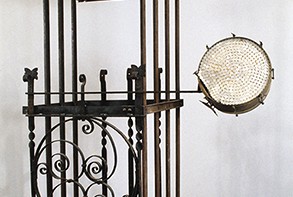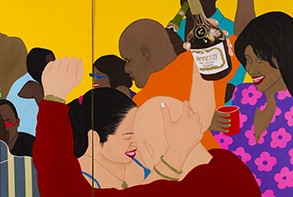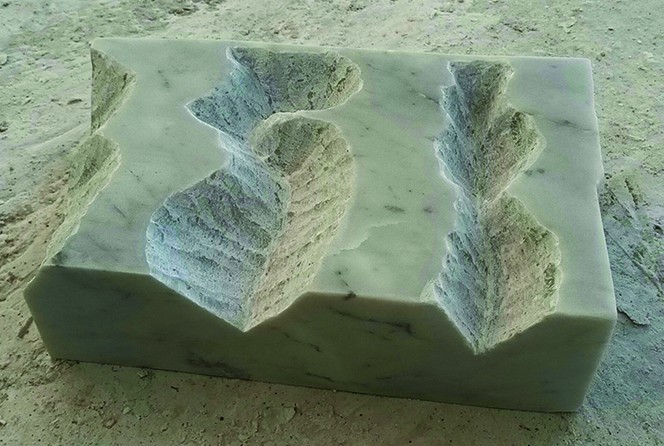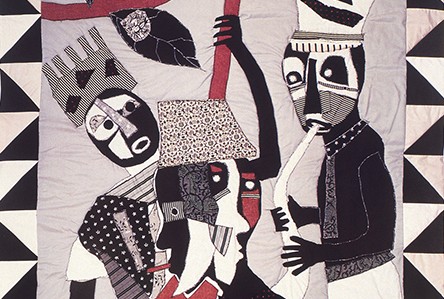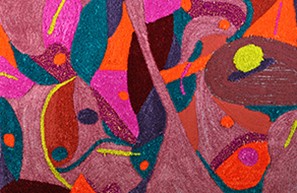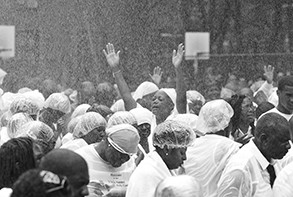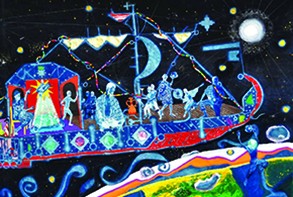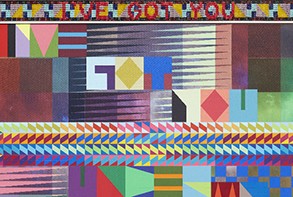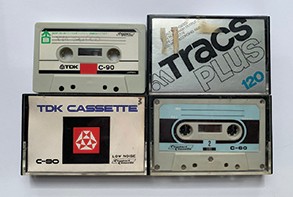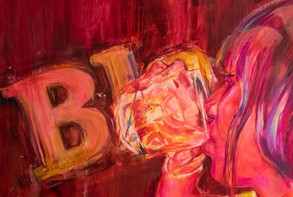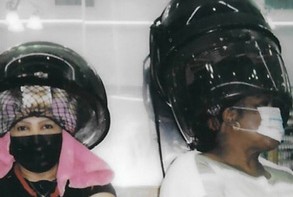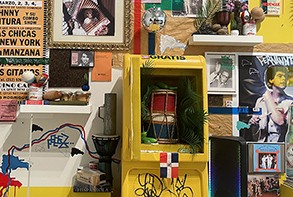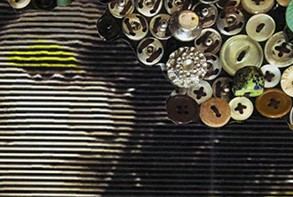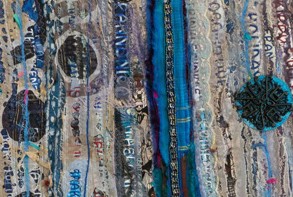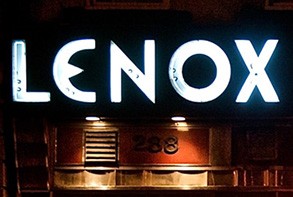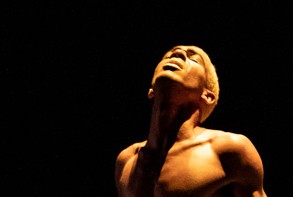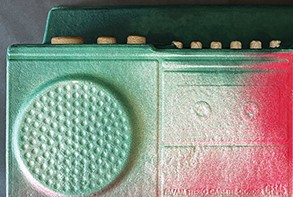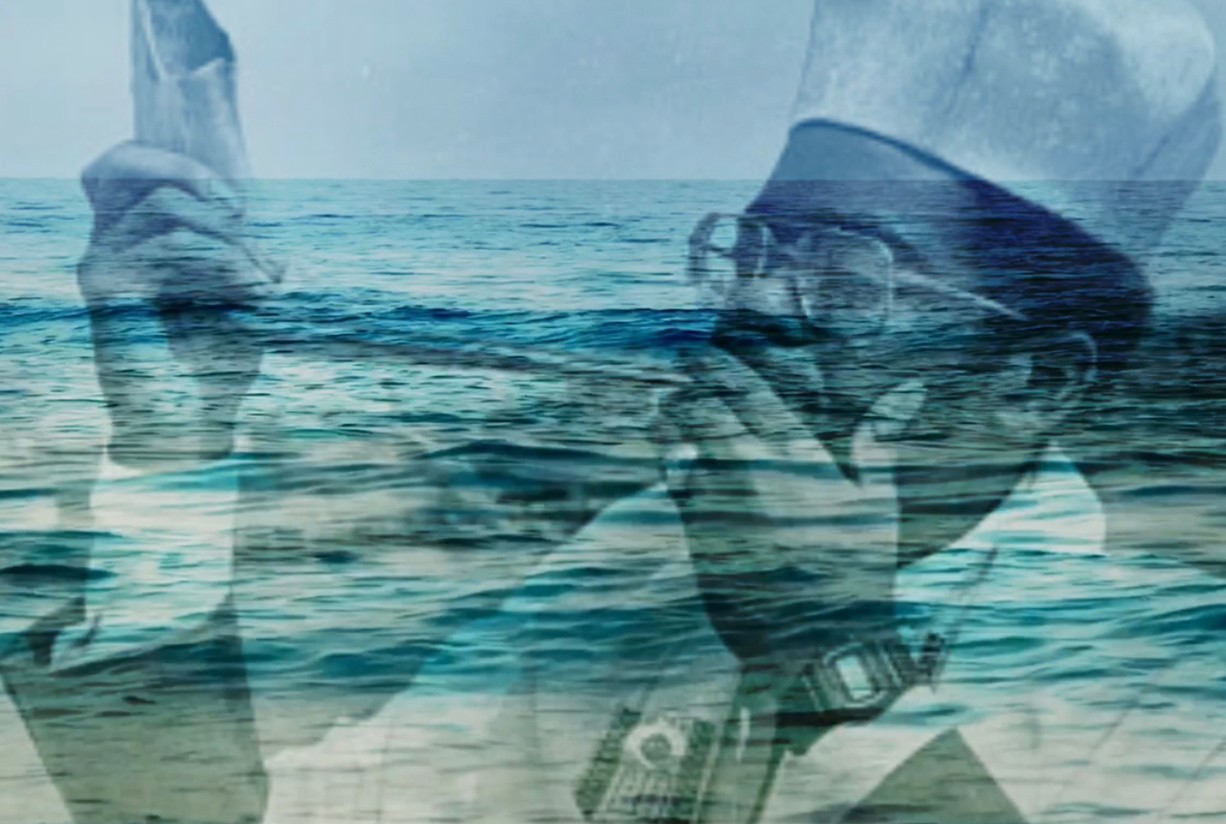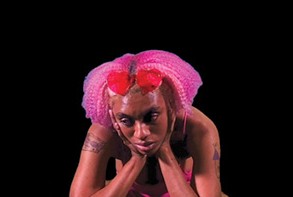ALTERONCE GUMBY
(b. 1985, Harrisburg, PA; living and working in the Bronx)
Contemporary abstract artist Alteronce Gumby explores the depths of individual colors, depicting spirituality, space, and social conditions on Earth and in the stars. Whether working with glass, paint, or mixed-media materials, Gumby incorporates glimmering, textured intrigue into his works, prompting viewers to reconsider their assumptions about color’s role in art. Researching the history and physical properties of his materials, Gumby combines them in unexpected manners, speaking to the chaos of universal forces.
Gumby received a BFA in Painting from Hunter College, CUNY (2013), and an MFA from the Yale School of Art (2016). Recent exhibitions featuring Gumby’s work include It Was All a Dream (Koki Arts, Tokyo, 2022), On Earth as it is in Heaven (Art-in-Buildings, New York, 2021), Cross Colours (Bode Projects, Berlin, 2021), and My Favorite Color is a Rainbow (Parrasch/ Heijnen Gallery, Los Angeles, 2020). He has won awards including the Austrian American Foundation/Seebacher Prize for Fine Arts and the Harriet Hale Woolley Scholarship (2016).
WORK IN THE EXHIBITION
Alteronce Gumby’s body of work reflects his fascination with color’s capacity for interplay with sound and sight. Building within the Black abstract expressionist tradition, his interstellar paintings explore the dynamism of colors like black, reclaiming darker shades as textured, rich, and full of iridescence. He explains his interest in exploring this dynamism by contrasting his work with modernist artists’ treatment of black, saying, “I was noticing the conversation from artists, from Malevich in the 1920s to non-objective art in the 1960s and ‘70s. It was all impersonal—they all considered the color black to almost be like a void, something without meaning.” Within this exploration, Gumby recognizes a musicality to the abstract expressionist practice, saying he “heard melodies in the palette and felt bass in the brush stroke.” Bifröst extends this interest with an abstract expressionist evocation of the rainbow bridge from Norse mythology, said to connect realities through space. The palette and design of the bridge function as musical notes, stacked on top of one another to create a rhythmic song. Gumby builds luminescent layers of paint on top of a black backdrop, suggesting that darkness is a dynamic, textured space. The abstract song-bridge Gumby composes offers viewers a pathway to another place, space, and experience of color.


